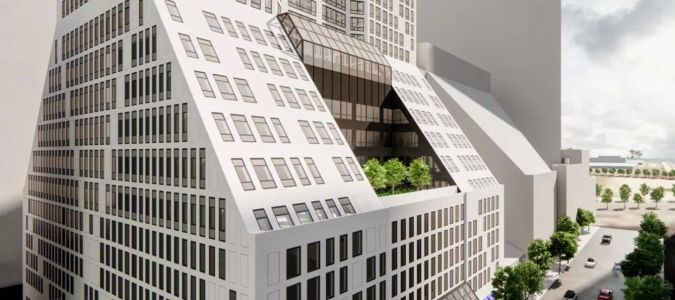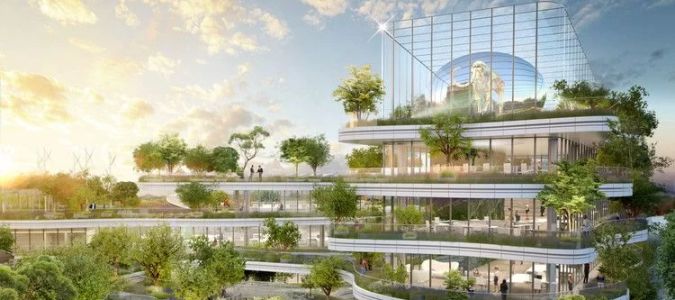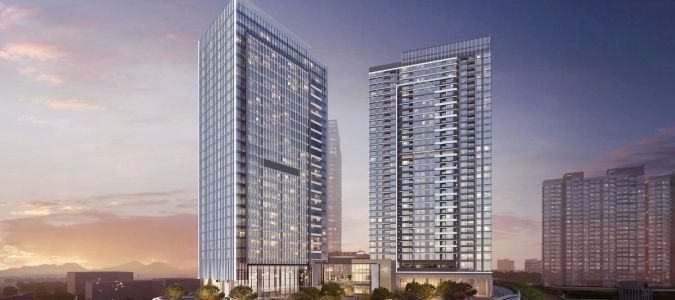How Architects Address Sustainability Concerns in Large Construction Projects
In today's world, sustainability has become a central focus in all industries, and the construction sector is no exception. Architects, as key players in shaping the built environment, are increasingly tasked with finding innovative solutions to address sustainability concerns in large-scale construction projects. Whether it's reducing carbon emissions, optimizing energy efficiency, or selecting environmentally friendly materials, architects play a crucial role in ensuring that these projects have minimal environmental impact while maximizing functionality and design. This article will explore how architects address sustainability concerns in large construction projects, focusing on key strategies and real-world examples.
1. Sustainable Materials: The Foundation of Eco-Friendly Architecture
One of the first and most important steps architects take to address sustainability concerns is selecting materials that have minimal environmental impact. Sustainable materials are those that are renewable, recyclable, and sourced responsibly. For example, architects may choose to use reclaimed wood, recycled steel, or low-VOC (volatile organic compounds) paints to reduce a building's carbon footprint.
In one recent large-scale office building project, the architects worked closely with sustainability experts to source locally produced, environmentally friendly materials. This not only reduced transportation-related emissions but also supported local economies. The use of sustainable materials ensures that the building will have a longer lifespan with fewer environmental costs over time. Furthermore, choosing materials that are durable and require less maintenance helps reduce the overall environmental impact of the building.
2. Energy Efficiency: Optimizing Building Design for Long-Term Sustainability
Energy efficiency is another key area where architects focus their efforts. Large construction projects, particularly commercial buildings and residential complexes, require a strategic approach to reduce energy consumption. Architects use a combination of passive design strategies, advanced technology, and energy-efficient systems to ensure that buildings are energy-efficient from day one.
For example, the integration of solar panels, advanced insulation techniques, and high-performance glazing can drastically reduce a building's energy needs. In a recent urban residential project, the architects employed smart lighting systems and HVAC (heating, ventilation, and air conditioning) solutions that adjust based on occupancy and time of day, ensuring minimal energy waste.
3. Waste Reduction: Designing with the Future in Mind
Architects are also concerned with minimizing construction waste and reducing a building's overall environmental footprint. Construction waste, which includes scrap materials, packaging, and discarded resources, is a significant contributor to landfills. To address this, architects often design projects with waste reduction strategies in mind, such as modular construction, prefabricated components, and efficient material use.
In a recent warehouse renovation project, for instance, the architects utilized modular design principles, which allowed for easy reuse and recycling of existing materials. The modular construction method reduces waste by allowing parts of the building to be pre-built off-site and then assembled on location, leading to less material waste and a faster construction timeline.
4. Water Efficiency: Managing Resources for a Sustainable Future
Water conservation is an essential component of sustainable building design, particularly in large construction projects. Architects must consider the installation of water-efficient plumbing systems, irrigation, and rainwater harvesting techniques to reduce water consumption over the building's lifetime.
For example, in a mixed-use development project, the architects incorporated water-efficient fixtures, low-flow toilets, and drought-resistant landscaping. The development also included a rainwater harvesting system that collects water for use in irrigation, significantly reducing reliance on local water supplies. These water-efficient measures not only help conserve valuable resources but also contribute to the overall sustainability of the building.
5. Green Certifications: Achieving LEED and Other Sustainability Standards
To further demonstrate their commitment to sustainability, many architects strive to achieve green building certifications, such as LEED (Leadership in Energy and Environmental Design). LEED is a widely recognized certification program that evaluates the sustainability of a building based on several factors, including energy efficiency, water conservation, and material selection.
In a large commercial office building project, the architects set a goal to achieve LEED Gold certification. To meet this standard, the design included solar-powered heating, LED lighting systems, and low-water landscaping. The commitment to achieving LEED certification not only ensured a sustainable design but also contributed to the building's long-term operational savings and increased its marketability to environmentally conscious tenants.
6. Collaboration with Sustainability Experts: A Holistic Approach to Sustainable Design
Architects recognize that creating truly sustainable buildings requires a collaborative approach that brings together experts from various fields. This includes environmental engineers, sustainability consultants, and even local community members who have valuable insights into the environmental impact of a project.
In a recent large-scale educational facility project, the architects collaborated with a team of sustainability experts to integrate renewable energy sources, optimize water usage, and reduce the building's carbon footprint. The involvement of experts ensured that every aspect of the project, from site selection to construction techniques, was aligned with sustainability goals. This holistic approach to sustainable design leads to better outcomes for the environment, the community, and the building's occupants.
Conclusion: The Growing Role of Architects in Sustainability
As the world becomes increasingly focused on environmental issues, architects are playing a more significant role in addressing sustainability concerns in large construction projects. From selecting sustainable materials and designing energy-efficient systems to reducing waste and collaborating with experts, architects have the knowledge and skills needed to create buildings that are not only functional but also environmentally responsible.
If you're embarking on a large-scale construction project and are committed to sustainability, it’s essential to partner with an architecture firm that specializes in green design principles. Working with professionals who prioritize sustainability ensures that your building will meet the highest environmental standards while delivering long-term operational savings. For more information or to schedule a consultation, visit 10 Jay Street.








